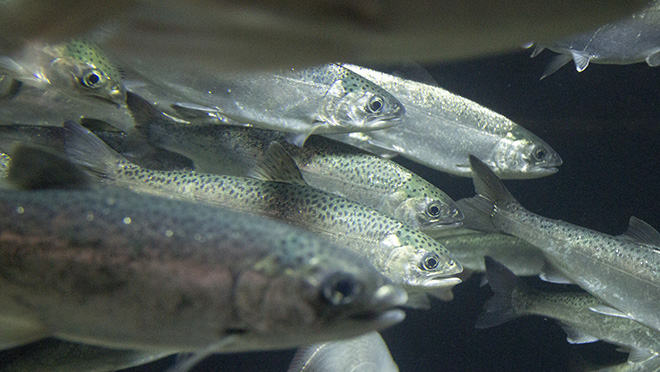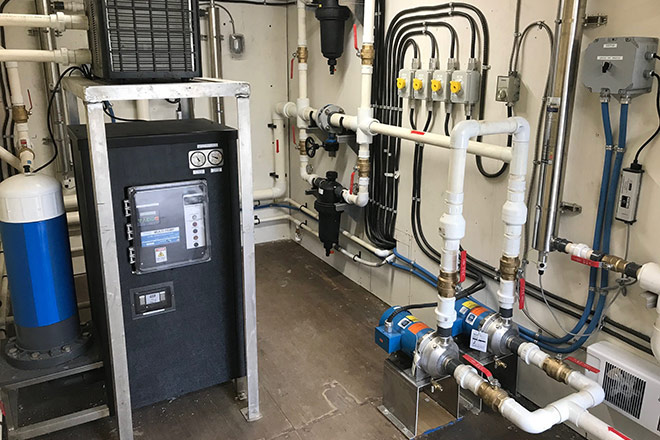Spruce City Wildlife Association hatches more salmon with less energy

Spruce City Wildlife Association: 'Conservation for future generations'
Spruce City Wildlife Association (SCWA) in Prince George, B.C. is a conservation club founded in 1970. SCWA's 200+ members provide a broad base of interests and experience to put something back into the wildlife resources that we all admire and make use of. Under the motto 'Conservation for future generations', the group is proudly affiliated with the B.C. Wildlife Federation.
SCWA's mandate is to ensure the long term management of B.C.'s fish, wildlife, park, and outdoor recreational resources in the best interests of all British Columbians. The group works to safeguard the interests of fish, wildlife, park, and outdoor recreational resource values in all natural resource developments.
One of the main ways the SCWA does this is with their own salmon hatchery, which they set up about five years ago. SWCA President, Dustin Snyder describes those early days: "Salmon development is based on the temperature of the water. The rivers up here obviously get pretty cold, so we needed to find a way to chill our water to a similar temperature. For the first few years, we installed little aquarium chillers like you would use at home. But it wasn't ever going to be a long term solution because we're trying to raise generations of endangered fish in a hatchery. So, we needed something with more capacity that would hold up for years to come."
Triple whammy funding
The SWCA applied to the B.C. Salmon Restoration and Innovation Fund, financed jointly by the federal and provincial governments to support B.C.'s fish and seafood sector, and to ensure the sustainability of wild Pacific salmon and other B.C. fish stocks.
"While our application was being approved, we connected with the Upper Fraser Fisheries Conservation Alliance (UFFCA), a First Nations group heavily involved in salmon restoration work," says Dustin. "And then we hit a triple whammy when Rio Tinto Alcan came on board as well. Thanks to all three organizations, we suddenly had the funds to do something really special."
A fresh start with energy efficiency top-of-mind
The group completely gutted the hatchery and started again with a commercial set-up and an increased focus on energy efficiency. Dustin and his team got to work installing new well pumps in every well, along with brand new custom chillers. And most importantly from an energy efficiency perspective, they added variable speed pumps.
"In our original hatchery, we were running 500 litres of water a minute, whether we needed it or not. All we had was an on/off switch," says Dustin. "That was clearly a huge waste of water and energy. But the new system has changed all that. Sometimes, we may only need 15 litres a minute. Our main tank now has a sensor that allows our well pump to turn on and fill up the tank. Then we use the water at whatever low flow rate we need. When it gets down to a certain level, the pump kicks in and refills it. Instead of running those pumps at full capacity for 24 hours a day like we used to, we're only running them for about five minutes for every hour now. You can imagine the energy savings we've seen there."

Maintaining a cool and energy efficient hatchery
The commercial chillers that replaced the home aquarium chillers are also saving energy: "Our well water comes in out of the ground at about 10 degrees," says Dustin. "However, the salmon need it to be chilled to 3 or 4 degrees. Our aquarium chillers would take about two days to get it down to that temperature, but our commercial chillers can do it in 90 minutes and hold it there. We have a 1-degree variance and so when the system is running, the chillers just need to kick in for 10 minutes or so to maintain it. Just like the pumps, our old aquarium chillers had to be running 24/7."
The new commercial chillers are also water-cooled so they produce way less heat than the aquarium chillers, which were air-cooled. "It was so counter-intuitive," says Dustin. "Trying to cool something down in a room where you're also blowing out hot air. We've also been able to locate them outside the hatchery in a shipping container, along with any other equipment that produces heat. This all helps to keep our hatchery as cool and energy efficient as possible."
And it's not just energy usage where the SWCA are seeing efficiencies. The number of fish they can raise has increased too, according to Dustin: "Previous, we were only able to raise about 60,000 fry. And now we can raise 120,000, with an incubation capacity of around 300,000. If we're able to expand in the future, maybe we can raise that even more."
Planning a project? Maybe we can help
If you're a regular reader of our customer stories, you're probably wondering how BC Hydro incentives fit in here. Well, the story is that the SCWA weren't aware of our incentives when they refitted their hatchery. But we were so impressed with the work they've done, we wanted to feature their story to remind you that no matter what energy-efficient project your organization is planning, it's always worth reaching out to your Key Account Manager or Regional Energy Manager, or calling 604 522 4713 in the Lower Mainland or 1 866 522 4713 elsewhere in B.C.